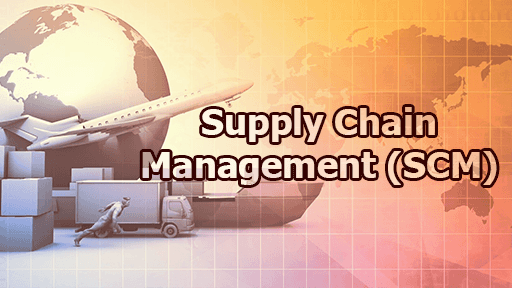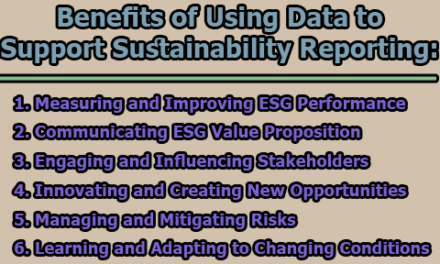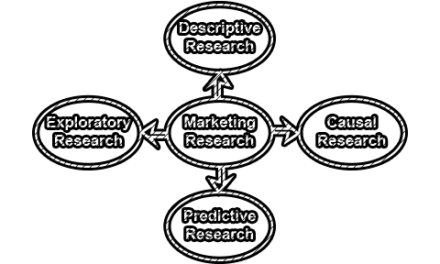Supply Chain Management (SCM):
Supply Chain Management (SCM) is a vital aspect of modern business operations, encompassing a comprehensive set of activities aimed at efficiently planning and managing the flow of goods, services, information, and finances across the entire supply chain. The primary goal of SCM is to meet customers’ needs and ensure a competitive edge by optimizing processes, reducing costs, improving inventory management, enhancing customer satisfaction, increasing flexibility, and shortening lead times. The following information, based on the definition provided by the Council of Supply Chain Management Professionals (CSCMP) in 2017, elaborates on the key aspects of Supply Chain Management:
1. Sourcing and Procurement: This involves identifying and acquiring the necessary materials, components, and products from suppliers. Effective sourcing and procurement strategies can lead to cost savings and improved product quality.
- Identification of Suppliers: In this stage, organizations assess and select suppliers for the materials, components, and products required for their production or service delivery. The selection process considers factors such as cost, quality, reliability, and supplier location.
- Negotiation and Contracting: Once potential suppliers are identified, negotiations take place to agree on terms, including pricing, quality standards, delivery schedules, and payment conditions. Contracts are then formalized to ensure legal compliance.
- Supplier Relationship Management (SRM): Establishing strong relationships with suppliers is vital for long-term success. This involves ongoing communication and collaboration to address issues, assess performance, and drive continuous improvement.
- Cost Savings: Effective sourcing and procurement strategies can result in cost savings through bulk purchasing, supplier collaboration, and efficient negotiations. Reduced costs ultimately contribute to improved profitability.
2. Conversion: This phase involves transforming raw materials into finished products through various manufacturing and assembly processes. Efficient conversion processes help organizations produce high-quality products while minimizing waste.
- Manufacturing and Production: This phase involves transforming raw materials into finished products through a series of manufacturing and assembly processes. Organizations need to ensure these processes are efficient, cost-effective, and produce high-quality goods.
- Quality Control: Rigorous quality control measures are implemented to monitor and maintain product quality. This may include inspections, quality assurance protocols, and adherence to industry standards.
- Waste Minimization: Efficient conversion processes focus on reducing waste, whether it’s in the form of materials, energy, or time. Lean manufacturing principles and sustainable practices are often applied to minimize waste and environmental impact.
3. Logistics Management: Logistics encompasses the planning, execution, and control of the movement and storage of goods within the supply chain. This includes transportation, warehousing, and distribution activities to ensure that products reach their intended destinations on time.
- Transportation: Planning, executing, and managing the transportation of goods is a crucial part of logistics. This involves selecting the most suitable modes of transportation (e.g., truck, ship, air, rail), optimizing routes, and monitoring shipments in real-time.
- Warehousing and Inventory Control: Efficient warehousing ensures that products are stored appropriately, minimizing damage and theft. Inventory control is essential to balance supply and demand and avoid overstocking or stockouts.
- Distribution: The distribution process ensures that products reach their intended destinations on time and in the desired condition. This phase also involves order fulfillment and delivery to customers or retail locations.
- Reverse Logistics: This aspect of logistics manages returns and the recycling or disposal of products, creating a sustainable approach to waste management and customer service.
4. Coordination and Collaboration: Collaboration is a fundamental element of SCM. Organizations must work closely with their supply chain partners, which can include suppliers, intermediaries, third-party service providers, and customers. Collaborative relationships facilitate information sharing, demand forecasting, and inventory management.
- Supplier Collaboration: Organizations collaborate closely with their suppliers to exchange information, forecasts, and demand data. This cooperation helps ensure a stable and efficient supply of materials.
- Demand Forecasting: Accurate demand forecasting is vital for anticipating customer needs and planning production and inventory levels accordingly. Collaborative efforts between supply chain partners contribute to better forecasting.
- Inventory Management: Efficient inventory management is critical to balancing supply and demand. This involves monitoring stock levels, optimizing reorder points, and minimizing carrying costs while avoiding stockouts.
- Information Sharing: Collaboration enables the sharing of information across the supply chain, reducing information lag, and allowing for quicker decision-making.
In addition to these core components, several factors are essential for successful SCM implementation:
I. Long-Term Relationships: Building and nurturing long-term relationships with supply chain participants is crucial. These relationships foster trust and cooperation, which are vital for smooth operations and effective problem-solving.
- Trust and Cooperation: Building and nurturing long-term relationships with supply chain participants is essential for fostering trust and cooperation. When organizations have confidence in their partners, they can work together more effectively, share information, and address challenges proactively.
- Risk Mitigation: Long-term relationships also help in risk mitigation. When supply chain partners understand each other’s capabilities and commitments, they can collectively develop strategies to manage potential disruptions, such as natural disasters, economic fluctuations, or unforeseen events.
II. Resource Sharing: Collaborative supply chain partners should share knowledge, assets, and capabilities. This sharing of resources enhances the overall efficiency of the supply chain and reduces duplication of efforts.
- Knowledge Sharing: Collaborative supply chain partners should share not only physical resources but also knowledge and expertise. This knowledge sharing can lead to better problem-solving, innovation, and process improvement. For example, sharing best practices and industry insights can enhance the overall efficiency of the supply chain.
- Asset Utilization: Sharing physical assets like transportation vehicles, warehouses, or manufacturing equipment can reduce costs and optimize resource utilization. This may involve co-locating facilities or jointly investing in assets that benefit multiple partners.
III. Integration of Planning: There should be a seamless integration between supply chain planning and business planning. This ensures that supply chain activities align with the broader organizational goals and objectives.
- Strategic Alignment: The seamless integration of supply chain planning with broader business planning ensures alignment with organizational goals and objectives. This means that supply chain strategies and activities are in sync with the company’s overall mission and vision.
- Demand Forecasting: Integrated planning allows for better demand forecasting, ensuring that the supply chain can meet customer needs efficiently. This involves close collaboration between the supply chain team and the business’s sales and marketing departments.
IV. Integration of Functional Areas: SCM should integrate all functional areas within an organization, including production, sales, marketing, finance, and more. This cross-functional approach ensures that all departments work in harmony to achieve supply chain goals.
- Cross-Functional Teams: SCM should involve cross-functional teams that include representatives from various departments, such as production, sales, marketing, finance, and more. This approach ensures that all parts of the organization work together harmoniously, sharing information and expertise.
- Efficiency and Responsiveness: Integrating functional areas streamlines operations. For instance, integrating sales and production departments can lead to just-in-time production that matches customer demand, reducing inventory costs and increasing responsiveness.
V. Internal Readiness: Organizations must be internally prepared for SCM implementation. This involves providing sufficient human and financial resources, as well as adopting adequate information technology systems. A robust IT infrastructure is crucial for facilitating communication, data analysis, and the achievement of internal SCM objectives.
- Resource Provision: Internal readiness involves ensuring that the organization has sufficient human and financial resources to support SCM goals. Adequate staffing, training, and budget allocation are crucial to enable efficient supply chain management.
- IT Systems: A robust information technology infrastructure is indispensable for SCM. It facilitates communication, data analysis, and the achievement of internal SCM objectives. Implementing the right software solutions and communication systems streamlines operations and supports data-driven decision-making.
VI. Investment in Infrastructure and IT: To turn the supply chain vision into reality, organizations need to invest in enabling infrastructure and advanced information technology. This includes implementing software solutions for inventory management, demand forecasting, order processing, and communication systems to enhance collaboration with supply chain partners.
- Enabling Infrastructure: Investment in infrastructure, such as state-of-the-art warehouses, transportation facilities, and material handling equipment, is necessary to enhance the efficiency and effectiveness of the supply chain.
- Software Solutions: Advanced information technology solutions are critical. Implementing software for inventory management, demand forecasting, order processing, and communication systems empowers organizations to track and manage the flow of goods and information in real-time. These systems facilitate collaboration with supply chain partners and help adapt to changing market dynamics.
In conclusion, Supply Chain Management is a holistic approach to managing the flow of goods, services, and information across the entire supply chain. It involves sourcing, conversion, logistics management, and extensive coordination and collaboration with supply chain partners. Effective SCM implementation is vital for reducing costs, optimizing inventory, enhancing customer satisfaction, increasing flexibility, and improving lead times. To succeed in the complex world of supply chain management, organizations must cultivate long-term relationships, share resources, integrate planning, involve all functional areas, prepare internally, and invest in the necessary infrastructure and information technology.

Library Lecturer at Nurul Amin Degree College










